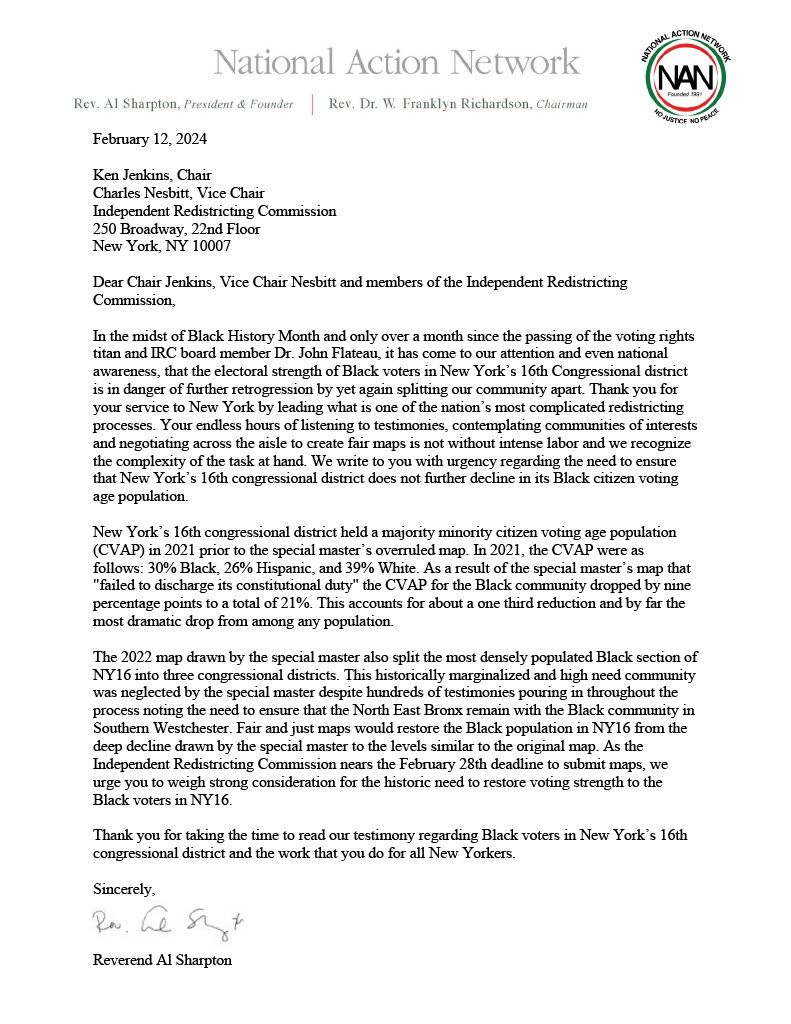New York’s messy redistricting saga may come to a close, as Democratic state lawmakers in Albany are poised to approve their own set of congressional lines as early as Wednesday.
Democrat Assembly Speaker Carl Heastie of the Bronx told reporters Tuesday that they are poised to approve the new lines.
What You Need To Know
- Democrats rejected the independently drawn maps proposed by the Independent Redistricting Commission on Monday
- They released new versions of New York's congressional districts early Tuesday morning and are poised to vote on the legislation by the week's end
- The new lines are not very different compared to the current districts or those drawn by the IRC but the changes do impact communities in the Bronx, on Long Island and upstate
So far, no high-level Republicans are threatening to sue to stop the process.
Those lines have come at a price: Over two years and costing in the multimillion dollar range, New Yorkers are asking: were the few changes really worth it?
Democrats on Monday erased congressional maps drawn by the state’s Independent Redistricting Commission.
They quickly replaced them with their own map.
“The legislation that the Legislature is now considering wouldn’t change the lines greatly. It actually would only in New York City would only change the districts in a couple of places in the Bronx,” Steven Romalewski, director of the CUNY Mapping Service at the Center for Urban Research at the Graduate Center, told NY1.
Democratic Rep. Jamaal Bowman’s seat in the 16th District spans parts of the Bronx and Westchester. But the Legislature wants to give him Co-op City, the massive Bronx apartment complex that is currently represented by Rep. Alexandria Ocasio-Cortez under the new proposal.
The reason is unclear.
“What does this mean for people, for example, in Co-op City, what do they think? Maybe they really liked being part of District 14 with AOC as their representative?” said Romalewski.
Democrats cut out the typically Republican-held town of Massapequa from the 3rd District on Long Island, where Democrat Tom Suozzi just won in a special election.
If approved, the district will cover three counties: Queens, Nassau and Suffolk.
So, why did Democrats make the changes?
“The path to taking back the house of representatives runs through the state of New York, where Republicans beat Democrats in 2022 by very narrow margins. So if Democrats can alter the maps, even just by a few blocks here and there, that could literally affect the balance of power,” said Jake Dilemani, a Democratic strategist at Mercury Public Affairs and Democratic district leader on the Upper East Side of Manhattan.
“I think people are a little bit wary. They don’t want to go down the lawsuit rabbit hole again,” he added. “They’re trying to play their best hand, which is: don’t stray too far from the maps, make these marginal changes.”
Others argue, neighborhoods needed to be realigned. Like in Bowman’s district, powerful leaders like Rev. Al Sharpton previously warned in a Feb. 12 letter that mapmakers should not to split up predominantly Black neighborhoods.

And, the petitioning process started for congressional candidates on Tuesday.
“As far as timing, yes, there’s a sense of urgency around this. People are out there with their petitions already. So, I’m anxious to have this chapter wrapped up as soon as possible. I believe the Legislature wants this wrapped up within the next day or so,” said Gov. Kathy Hochul when asked where negotiations stand, at a separate event in Schenectady.
Sources tell NY1, the governor will sign the lines into law once the Legislature acts. It’s unclear whether the GOP will sue. But state Senate Republican Minority Leader Robert Ortt blasted the new plan in a statement on Monday.
“Albany Democrats are once again poised to create their own gerrymandered maps in another shameful power grab,” he said. “Since the creation of the IRC, Democrats have continually circumvented the will of New Yorkers and attempted to rig the system to benefit themselves. When their last gerrymander was struck down, they stacked the Court of Appeals in an attempt to get a different result.”
Watchdog groups argue the process needs to be reformed before the next census count.
“The end result is we’ve all experienced. It’s just been chaotic and it’s not good,” Romalewski said.


